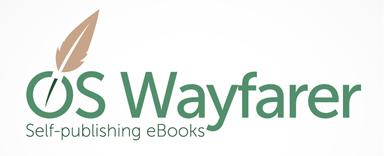Introduction
Writing your eBook is the topic of this seventh post in our eBook self-publishing series.
Armed with the information collected prior to, during, and after the site visit, it is time to start writing your eBook. This can be a daunting task, but with some preparation, you will be able to discern a path forward.
Suggested writing steps
Some suggestions for writing your eBook, based on our experience, include:
- Review your planned eBook structure and make any necessary adjustments. This will be an iterative process but hopefully, with some preparation, the changes will be limited.
- Print any important references held online. Even though we work with dual monitors it is useful to “change things up” and read and mark-up a hard copy away from the computer.
- Align your collected information with your proposed chapters, including photographs. Placing the information in labelled A4 paper/plastic wallets ensures information can be easily found and retained.
- Plan a schedule for writing your eBook – we always do but it invariably changes and drifts. Nevertheless, it is important to produce a plan. A plan forces you to think about the content (again) and provides some deadlines. Originally this was placed in an electronic calendar with alarms, but this drove us “nuts”! Now we just use a paper-based timeline prepared in MS Excel, which can be easily adjusted!
- Plan to write your eBook when you are at your most productive (e.g. Are you a morning, afternoon, or night person?). We write in the mornings and throw things around the office in the afternoon (after a siesta, of course!). If we try to write in the afternoon, we will write the same few sentences 10 times and get nowhere. In the morning it just flows. If you get stuck – walk away. For example, go for a bike ride or take a 30-minute walk. The effect can be amazing.
- Start with a chapter or appendix that you feel most confident about and just get the words started. Revision and initial editing can be done once you have a draft of the chapter/appendix. As you get into it, you’ll start thinking about and planning the more challenging chapters/appendices.
- Record your references with each section (chapter or appendix) so they are not forgotten. This will help the reader as well; for example, the references for Street Art will be at the end of the Street Art Chapter/Appendix. Having said this, we always list all references in an appendix.
- We write introductions and conclusions last when the other content of the eBook is known. If you write these first, not only will it be difficult, but generally the content will change after writing the complete eBook.
- We prepare our drafts and the penultimate final draft in Microsoft Word, complete with photographs, diagrams, and table of contents. This provides us with an excellent idea of how the eBook will look when finished. It is also easier to share with the “brains trust” because of Microsoft Word’s popularity and multi-platform use.
- The final draft is sent to the “brains trust” for editing and comment. Don’t be surprised if you end up with five or six revisions of the final draft! You’ll feel terrific when you reach this point.
Note: The document we prepare in Microsoft Word is not intended to be electronically converted into another format (e.g. Mobi, EPUB or Smashword’s “Meat Grinder”). As will be discussed in more detail later we copy and paste the document into SIGIL for final formatting and production of an EPUB.
Writing style
Our writing style prioritises readability. We like:
- Headings to guide the reader.
- Shorter rather than longer paragraphs
- Numbered and bulleted lists
- Italicised and indented quotes
- Photographs in context
- Hyperlinks (e.g. table of contents; references)
- A new page for each chapter
- Active not passive voice (tough, tough, tough!)
One goal is to ensure the document is scannable, so readers can determine the document layout and general content easily, without having to read in detail.
From the start of writing your eBook (after returning from our holiday) until acceptance by Amazon and Smashwords, generally takes us between three and four months.
Other posts in our eBook self-publishing approach
Visits: 342


 Amazon Links:
Amazon Links:






Leave A Comment